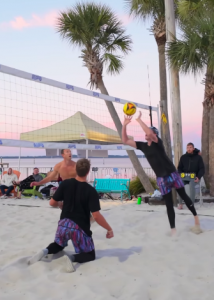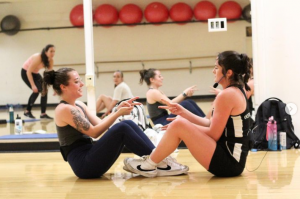Beginner’s Guide to Ultimate Frisbee Hand Grips and Catching Techniques
7 min read
Welcome to the thrilling world of Ultimate Frisbee, where agility, teamwork, and precise throws and catches reign supreme. If you’re just starting your journey as an Ultimate Frisbee enthusiast, you’re in for an exciting ride. One of the first skills you’ll need to master is hand grip techniques and catching methods. In this comprehensive guide, we’ll walk you through the easiest and best techniques for beginners, helping you become a formidable player on the Ultimate Frisbee field.
Hand Grip Techniques
Your ability to control the frisbee’s flight and make accurate throws largely depends on your hand grip. Let’s explore three primary hand grip techniques that every beginner should learn:
The Power Hand Grip
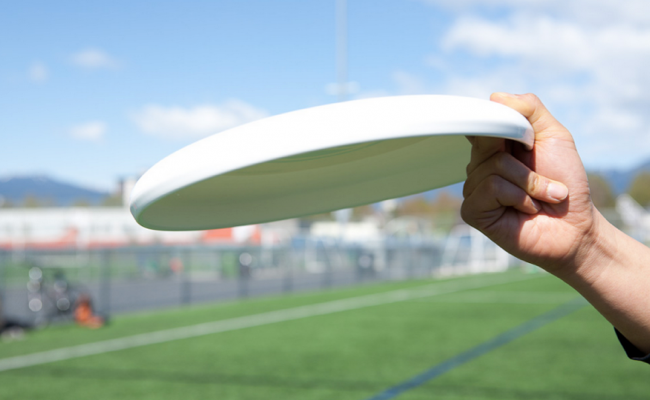
The Power Grip, also known as the backhand grip, is the foundation of your throwing game in Ultimate Frisbee. It provides stability and control, allowing you to send the frisbee exactly where you want it to go.
- Start with your dominant hand: Hold the frisbee with your dominant hand (the hand you write with).
- Position your thumb: Place your thumb on top of the frisbee, pointing in the direction of your intended throw.
- Finger placement: Your four fingers should be on the bottom side of the frisbee. Your index and middle fingers should be tucked under the rim, while your ring and pinky fingers provide support underneath.
- Wrist and elbow: Keep your wrist firm and your elbow bent at a 90-degree angle.
Mastering the Power Grip is your first step towards making accurate and powerful throws on the field.
The Fan Hand Grip
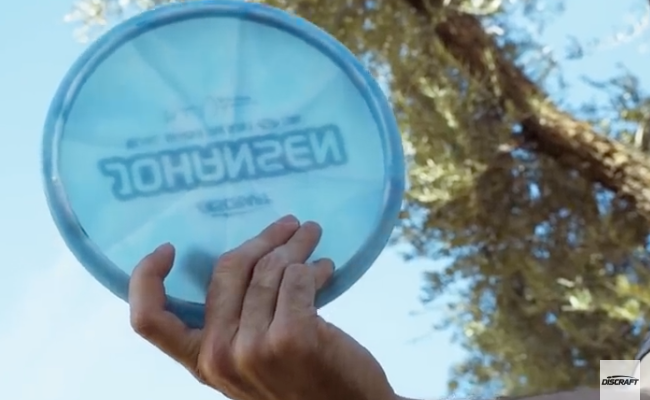
The Fan Grip, also known as the forehand grip, is crucial for executing flicks and hammer throws in Ultimate Frisbee. It offers excellent control and spin on the disc.
- Hold with your dominant hand: Begin by holding the frisbee with your dominant hand.
- Thumb placement: Place your thumb on the top of the frisbee, similar to the Power Grip.
- Finger arrangement: Unlike the Power Grip, the Fan Grip involves placing your index and middle fingers on the top side of the frisbee, while your ring and pinky fingers grip the bottom side.
- Wrist and elbow positioning: Maintain a firm wrist and a 90-degree elbow angle.
Perfecting the Fan Grip will enable you to make accurate forehand passes, adding versatility to your playing style.
The Modified Fan Hand Grip
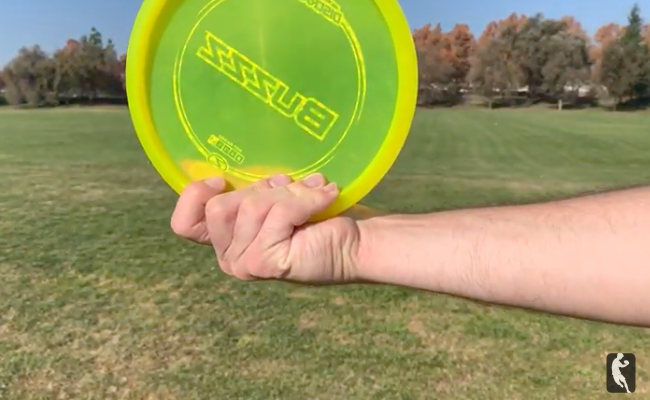
The Modified Fan Grip is a variation of the Fan Grip and is particularly useful for shorter passes and quick releases.
- Dominant hand: Hold the frisbee with your dominant hand.
- Thumb orientation: Place your thumb on the top of the frisbee, similar to the Fan Grip.
- Finger placement: Unlike the Fan Grip, use only your index and middle fingers on the top side of the frisbee.
- Wrist and elbow: Keep your wrist firm and your elbow at a 90-degree angle.
The Modified Fan Grip provides enhanced control for short and precise throws, making it an essential skill for close-quarter passes during a game.
Catching Techniques
Catching is just as important as throwing in Ultimate Frisbee. There are several catching techniques to master, depending on the situation. Let’s explore three primary catching techniques for beginners:
The Two-Handed Catch

The Two-Handed Catch is the fundamental catching technique and is the go-to method for most situations in Ultimate Frisbee.
- Eye on the disc: Keep your eyes on the frisbee as it approaches.
- Hand positioning: Extend both arms in front of you, with your hands slightly apart and palms facing upward.
- Secure the disc: As the frisbee comes within reach, use both hands to secure the disc, trapping it between your palms and fingers.
- Absorb the impact: Allow your hands and arms to move backward with the force of the catch to absorb the impact.
The Two-Handed Catch is the safest and most reliable catching technique for beginners, ensuring that you secure the frisbee with minimal risk of dropping it.
The One-Handed Catch
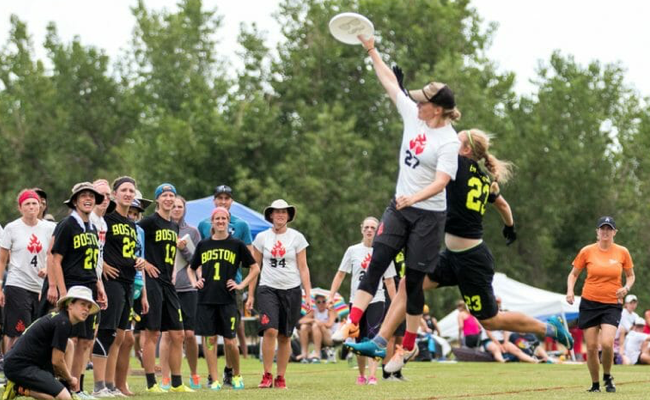
The One-Handed Catch is a more advanced technique that allows for greater range and style when catching the frisbee. It’s often used for higher throws or when a player needs to make a diving catch.
- Trajectory focus: Concentrate on the frisbee’s trajectory and position your body to align with its path.
- Dominant hand: Extend your dominant hand toward the frisbee, keeping your non-dominant hand on your side or behind your back.
- Grip the disc: As the frisbee approaches, use your dominant hand’s fingers to grasp the edge or center of the disc, depending on the throw’s trajectory.
- Secure the catch: Maintain a firm grip and absorb the impact by allowing your body to move with the catch.
The One-Handed Catch requires practice to perfect but can be a game-changer when you need to make challenging catches.
The Layout Catch

The Layout Catch is the most spectacular catching technique in Ultimate Frisbee. It involves diving horizontally to make an extended catch, often seen in highlight-reel plays.
- Anticipate the trajectory: Predict the frisbee’s trajectory and plan your dive accordingly.
- Sprint and dive: As the frisbee approaches, sprint toward it and dive forward, extending your body parallel to the ground.
- Extend one arm: Fully extend one arm toward the frisbee while keeping the other arm tucked in.
- Make contact: Make contact with the frisbee and maintain a tight grip as you land.
- Roll or slide: Roll or slide to absorb the impact and regain your footing.
The Layout Catch is a high-risk, high-reward maneuver that can turn the tide of a game, leaving spectators in awe.
Tips for Beginning Ultimate Frisbee Players
Now that you’ve learned about hand grip and catching techniques, let’s delve into some valuable tips for beginners to enhance their Ultimate Frisbee skills:
1. Practice Consistently
Consistent practice is the key to improving your hand grip and catching abilities. Set aside time regularly to work on your throws and catches. Whether it’s in a park with friends or at an official practice session, practice will make you more confident on the field.
2. Work on Hand-Eye Coordination
Hand-eye coordination is crucial in Ultimate Frisbee. Engage in activities that improve this skill, such as playing catch with a regular frisbee or using a tennis ball for quicker reactions.
3. Learn from Experienced Players
Seek guidance from experienced Ultimate Frisbee players. They can provide valuable insights, offer tips, and even mentor you in developing your skills.
4. Master Both Grips
While you may have a dominant grip, it’s essential to be proficient with both the Power Grip and Fan Grip. This versatility will allow you to adapt to different game situations.
5. Practice Catching Drills
Incorporate catching drills into your practice routine. These drills can simulate game scenarios and help you become a more reliable receiver.
6. Understand Field Awareness
Ultimate Frisbee is not just about throwing and catching. Develop field awareness by understanding your position, reading the game, and anticipating where the frisbee will be.
7. Stay Fit and Agile
Maintain physical fitness and agility to excel in Ultimate Frisbee. Regular workouts and conditioning exercises can enhance your speed, endurance, and jumping ability.
8. Play in Tournaments
Participating in local tournaments or pick-up games can expose you to different playing styles and levels of competition, accelerating your learning curve.
9. Stay Positive and Patient
Remember that improvement takes time. Stay positive, be patient with yourself, and don’t be discouraged by mistakes. Every error is an opportunity to learn and grow as a player.
10. Enjoy the Game
Ultimate Frisbee is all about having fun. Enjoy the camaraderie, teamwork, and the joy of being on the field with fellow enthusiasts. To gather more information on if ultimate frisbee is the perfect sport / fitness activity for you, please check out our recently posted blog here.
Now, let’s address some frequently asked questions about hand grip and catching techniques in Ultimate Frisbee:
Frequently Asked Questions
Q1: Which hand grip should I use when throwing a long pass?
A1: For long throws, such as hucks, the Power Grip is generally the preferred choice. It provides the stability and power needed to send the frisbee over longer distances.
Q2: Can I switch between grips during a game?
A2: Yes, you can switch between grips based on the situation. Experienced players often use both the Power Grip and Fan Grip to adapt to various throwing angles and distances.
Q3: Is the Layout Catch safe for beginners to attempt?
A3: The Layout Catch is an advanced technique and can be physically demanding. It’s best to practice and attempt it under the guidance of experienced players and with proper safety precautions.
Q4: How do I improve my catching skills when playing in windy conditions?
A4: Wind can be challenging, but practicing in windy conditions can help. Focus on maintaining a firm grip, tracking the frisbee’s movement, and adjusting your positioning to account for the wind.
Q5: What should I do if I keep dropping catches during games?
A5: Dropping catches is a common challenge for beginners. Continue practicing catching drills and work on hand-eye coordination. Confidence and consistency will improve with time.
For more information on ultimate frisbee, please visit USA Ultimate, the governing body for the sport in the United States, offering resources and event information.
To receive the latest in Ultimate Frisbee news, please visit World Flying Disc Federation, the international governing body for flying disc sports.
In conclusion, mastering hand grip techniques and catching methods is crucial for any beginner Ultimate Frisbee player. With consistent practice, dedication, and the tips provided in this guide, you’ll be well on your way to becoming a skilled and confident player on the Ultimate Frisbee field. So, grab your frisbee, head out to the field, and enjoy the exhilarating journey of Ultimate Frisbee!
